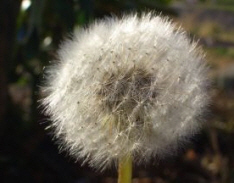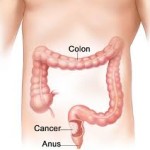 The term eczema is applied very broadly to a group of persistent skin conditions that are characterized by dryness, recurring rashes, redness and cracking, oozing and bleeding. Individuals who experience eczema may also have temporary skin discoloration which often disappears over time. They are a result of heeled lesions and scarring is very rare.
The term eczema is applied very broadly to a group of persistent skin conditions that are characterized by dryness, recurring rashes, redness and cracking, oozing and bleeding. Individuals who experience eczema may also have temporary skin discoloration which often disappears over time. They are a result of heeled lesions and scarring is very rare.
Interestingly, the prevalence of eczema will peak in infancy, meaning that the majority of individuals who are treated clinically start with their eczema when they are infants. Girls are predominantly affected and also present during their reproductive years, between the ages of 15 and 49. Since The Second World War the number of individuals who are diagnosed with eczema has increased significantly. This is true both in the United States and in data collected in the UK.
There are at least four common types of eczema which have been reported- atopic eczema, contact dermatitis, xerotic eczema and seborrheic dermatitis. Much less commonly diagnosed are: Dyshidrosis, Discoid eczema, venous eczema, dermatitis herpetiformis, neurodermatitis, and autoeczematization.
By far atopic eczema is the most common and is linked to allergic disease believed to have a hereditary component. Sufferers often complain of an itchy rash that is noticeable on the head, scalp, neck, inside of the elbows, behind the knees and on the buttocks. In contrast to psoriasis, eczema is likely to be found on the flexor aspects of joints, meaning on the inside of where a joint bends.
Contact dermatitis has two different categories-allergic and irritant. Allergic contact dermatitis is the type of eczema that develops as a result of an allergen, such as poison ivy. An irritant contact dermatitis will develop as a direct reaction to a detergent such as sodium laurel sulfate. Some substances cause a reaction once they touch the skin while others only cause a reaction after exposure to sunlight.
Doctors estimate that about three quarters of the time contact dermatitis, or contact eczema, is a result of an irritant and not an allergen. Different from atopic eczema, contact eczema is completely curable by removing the offending substance from the environment and in avoiding it all together.
In general, atopic eczema will come and go based on external factors, like triggers, which are not always identified. The underlying condition appears to be an abnormal response in the body’s immune system to environmental stimuli. Like many diseases it cannot be cured but with current medical treatments it can be well managed.
Eczema can look different from person to person but it is characterized by a drying, red, itchy patch on the skin. In some cases, it may bubble up and ooze while in others it may be more scaly and dry. Those who suffer from it chronically will find that the skin takes on a leathery texture because of the thickening caused by the eczema.
The National Institutes Of Health estimate that 15 million people in the United States alone have some form of eczema. About 10 to 20% of all infants born will develop some type of eczema but over half of these will improve greatly by the time they are five to 15 years old. Researchers have found a significant link in those who suffer from eczema as infants and go on to develop asthma as school agers.
Those who have eczema will want to moisturize frequently, avoid sweating or overheating, reduce stress levels, avoid using scratchy materials in their clothing, such as wool, avoid harsh soaps and detergents and, as much as possible, avoid environmental factors that trigger allergies such as pollen, mold and animal dander.
 The goal in the treatment of eczema is to prevent scratching and long-term changes to the skin. The most common treatment is the application of lotions or creams; as well as the prevention by identifying as many triggers as possible and avoiding them. Lotions and creams are most effective when applied within five minutes after getting out of the shower so that the moisture is locked in to the skin.
The goal in the treatment of eczema is to prevent scratching and long-term changes to the skin. The most common treatment is the application of lotions or creams; as well as the prevention by identifying as many triggers as possible and avoiding them. Lotions and creams are most effective when applied within five minutes after getting out of the shower so that the moisture is locked in to the skin.
Individuals who have a current breakout may also find that cold compresses applied directly to the skin will help relieve the itching.
If the condition persists, or even worsens, physicians may recommend the application of nonprescription corticosteroid creams and ointments to help reduce the inflammation. These creams and ointments must be used for short periods of time because they can thin the skin and make the problems worse over time.
Alternatives include more potent prescription creams and ointments, which, while more effective, will have side effects. Your doctor will limit the length of time in locations where they can be applied.
Skin affected by eczema is at a higher risk for infection. Any infection must be treated immediately by your physician and not treated at home. For severe itching, doctors may recommend antihistamines to decrease the histaminic response in the body and therefore the itching.
Two topical medications, tacrolimus and pimecromlimus, have recently been approved by the FDA to treat atopic dermatitis. They belong to a class of drugs called calcineurin inhibitors which work by changing the immune response in the body. Thus far they have not produced some of the long-term side effects associated with long-term use of topical corticosteroids.
Resources:
KidsHealth.org: Eczema
http://kidshealth.org/parent/infections/skin/eczema_atopic_dermatitis.html
University of Maryland Medical Center: Eczema
http://www.umm.edu/altmed/articles/eczema–000054.htm
BabyCenter: Eczema
http://www.babycenter.com/0_eczema_10872.bc
American Academy of Dermatology: Atopic Dermatitis
http://www.aad.org/skin-conditions/dermatology-a-to-z/atopic-dermatitis
Mayoclinic: Atopic Dermatitis
http://www.mayoclinic.com/health/eczema/DS00986


Leave a Reply